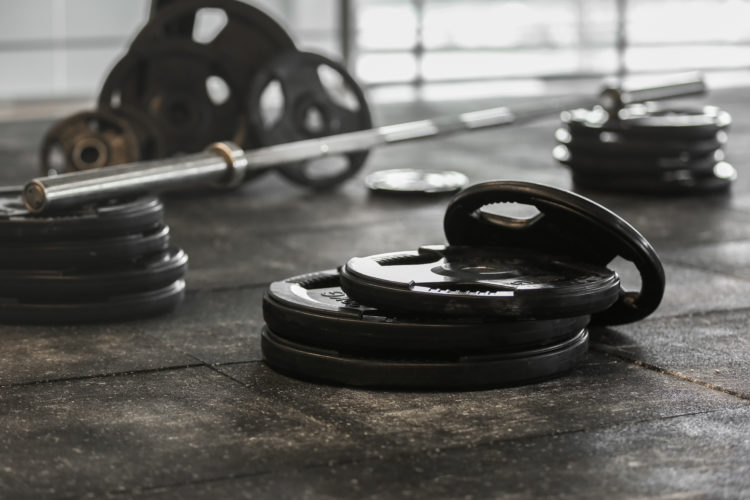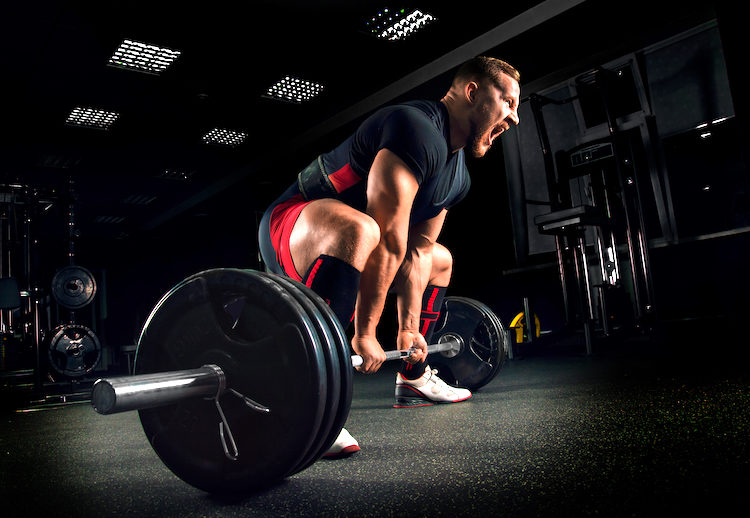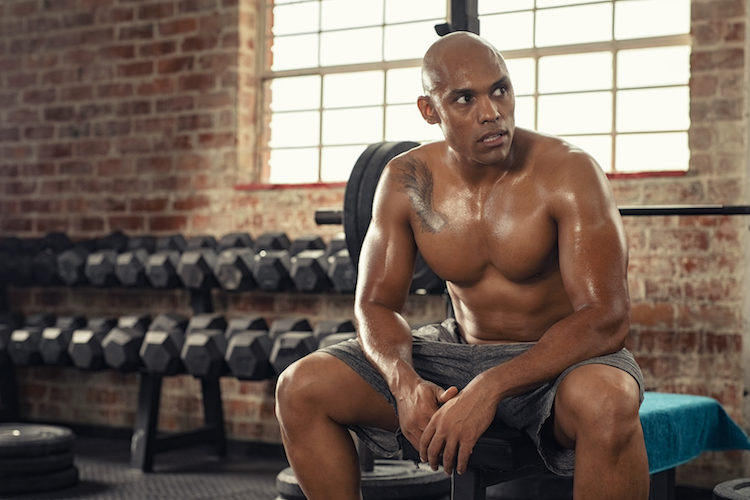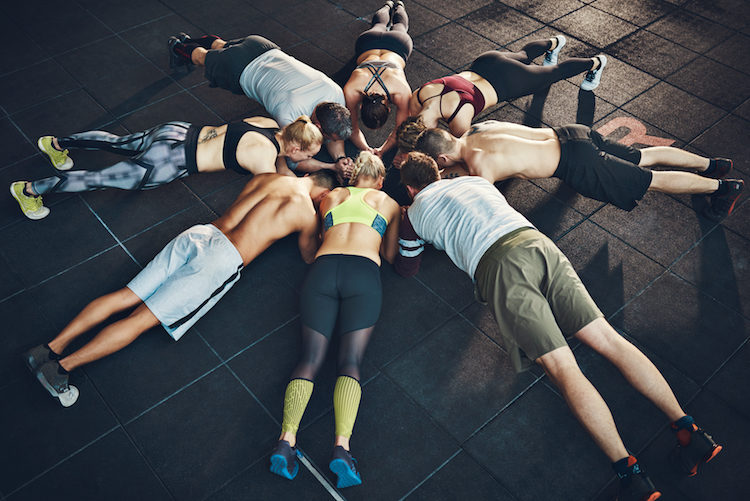How To Go Back To The Gym The Wrong Way | BarBend (original) (raw)
Figuring out when to go back to the gym isn’t about you — it’s about everyone around you. But as gyms reopen in states across the country, getting back to the gym is probably on your mind. When you do eventually go back, you’ve got to make sure you’re doing it right — which includes not going back to the gym too soon.
I won’t be going back to the gym until well into 2021. Even typing those words feels like an absolute nightmare, though I know it’s my reality. Why? Personally, I think the public health risks are just too high, and will be until there are vaccines available across all society’s communities — and that isn’t going to happen in the immediate months. Then at the end of 2020, I’m still scheduled to have major surgery. With those factors combined, I’m going to be out of the gym far, far longer than I want to think about.
And I know myself — I know exactly what I’m going to want to do when I get back, major chest surgery be damned. I’m going to want to get under a naked barbell, revel in a solid warmup set, slap on a couple plates and get going. I know I’ll want to. And I know how hard it will be to resist. But resist, I shall. Because the more we all give in to our “diving right back in and picking up where we started” desires, the faster we’ll all be sidelined (again) with injuries. To prevent all that fresh hell, you might want to try (really, really hard) to avoid these mistakes when you eventually get back to your gym.
Editor’s note: This article is an op-ed. The views expressed herein and in the video are the author’s and don’t necessarily reflect the views of BarBend. Claims, assertions, opinions, and quotes have been sourced exclusively by the author.

Africa Studio/Shutterstock
Deciding To Go Back To The Gym At All
I know you want to get back to your barbells — I do. But we can find other ways to cope and we can discover new (to us) ways of moving our bodies; we can get even more creative about making ourselves stronger, both physically and mentally. We cannot, however, find ways to protect immunocompromised people in our families and communities from getting sick or dying from COVID — except, of course, by exercising caution and safety. (See what I did there?)
So the first wrong way to go back to the gym is… going back to the gym. If businesses are reopening in your area, hang back for at least a few weeks and see what happens to the infection rates. If the rates are starting to go up, there’s a reason: people going back to gyms is, unfortunately, likely to be one of them. And, as much as it’s been hurting my mental health to stay away from my gym, the safety of people in my community is more important to me. I can find other ways to cope; sans vaccines and treatments, people can’t find other ways to heal from COVID.
If you’re living in an area that’s been maintaining low infection rates, even with reopenings, and your gym is actively practicing physical distancing measures and enforcing staff and member safety… I guess I can’t stop you from going back. But even if you’re not going back right now, the following tips are definitely things to keep in mind as you mentally prepare to return to your gym in (hopefully) the months ahead.
[Related: When someone tests positive at your gym: two gym owners’ opinions]

Andy Gin/Shutterstock
Ramping Up Too Quickly, AKA Ego Lifting
If you’re like me, you’ll be so excited by the presence of a bar and plenty of plates that you’ll want to load ‘em up like it’s a regular Friday morning and go. But it won’t be a regular Friday morning — it’ll be your first day or week back in the gym after many, many months, and the first thing you want to do is ego lift… but it’s the last thing you should do.
Sure, you need to program a slow ramp up (more on that below). But within a single session, you also need to physically ramp up slowly. Take your time with a stripped barbell, and don’t be afraid to throw tiny plates on instead of going right for the 45s. If your working weight for the day winds up being a pre-quarantine warm-up weight, so be it. Keep it there until you can easily hit 10-12 reps for at least a few sets. Your priority isn’t your ego — or at least it shouldn’t be — your priority is your strength. And the best way to build that back is to take it slow. It’ll give you the results you’re looking for much faster, and with a lot less risk.
Stopping Your Mobility Work
It’ll be all too easy to get excited by all that iron and skip the warmup mat completely — but for the love of all things lifting, don’t neglect your warmup (or cooldown). Activating your muscles with dedicated movement prep, just like you’ve been doing with your bodyweight and Zoom class quarantine workouts, is going to be absolutely essential. Stop daily hip-opening work at your own risk — your loaded squat is going to suffer. It’ll be tempting to spend all your time with the barbell, so if you absolutely need to, get your mobility work on at home. Keeping that routine is going to get you back into your game safer, faster, and more effectively.
Having Sessions That Are Too Long
You might have been able to spend a couple hours working out before the pandemic — 5x5s with proper rest, warmups, and cooldowns can take a while! — but don’t expect to be able to devote your entire Saturday morning to your workout right away.
Sure, you might be staying in tip-top shape during quarantine, and you might even have improved the hell out of your cardio routine. But just because you’ve been developing your general work capacity doesn’t mean your body is ready to lift heavy barbells, let alone for an extended period of time. Especially if you’ve been keeping up some form of effective training during the pandemic, don’t worry — you’ll snap back sooner than you think. But don’t try to push it by squeezing months of gym time into your first week back. You’ll wind up injured, not stronger.

Rido/Shutterstock
Getting Fixated On Your Numbers, AKA Beating Yourself Up
Used to be able to crank out an easy 10 reps at 225? Can barely squeak out three at that weight now? That’s okay. Your muscles haven’t melted and your gains aren’t completely gone — especially if you’ve been keeping up with your strength training in some capacity, you’ll be more than fine. Just don’t get hung up on your initial numbers.
Your body is re-adjusting, but it’ll do so quickly — if you avoid the trap of trying to do too much too fast. Remember how quickly newbies put weight on the bar in their first few months of training: the cool thing is, that’s going to be you. As long as you take. Your. Time. Beating yourself up won’t make you lift more weight — it’ll freak you out and ruin your welcome home lifting sessions, and you deserve better than that.
Alright, so you know what not to do. But not beating yourself up is so much easier said than done. You need a strategy for keeping it cool, and you need a plan for being gentle enough with yourself to help your body re-adapt to the gym most effectively. Even if you’re not going to physically hit the gym again for many months, like me, you’ll want to get your back-to-gym game plan nice and solid ahead of time.

takoburito/Shutterstock
Prep Yourself Psychologically
It’s probably going to be hard heading back to the gym. If it’s been your safe place and home away from home and you’ve been away for so long… yeah, it could get super emotional. And yeah, that’s okay. And you’re hopefully coming back to it with a whole arsenal of newfound strengths — your bodyweight work, lateral movements, mobility, cardio, agility, balance, stability… all of that’s hopefully getting more solid through whatever quarantine routine you’ve adopted. And — once again — you probably haven’t dipped in strength as much as you fear you have.
But fear is a powerful thing, and that fear might just make you feel like everything is impossible and you’ll never be the lifter you were again. Your fear will probably meld with your mourning months or even year away, and that’s alright, too. Embrace that. Journal it out (because gym journals aren’t the only things you can write in). Talk about it with your therapist, if you have one. Consider laughing at yourself, just a little bit, when you’re struggling with your warmup weight.
You’ll get your groove back, quicker than you think — preparing yourself to both laugh and cry will help the process go just a bit smoother.
Craft A Strict, Conservative Program — And Do Not Add To It
We’ve all been there: my program says I’m supposed to go for 3×3 at 80% of my max. But my first set felt really solid, so I’ll just crank it up. Just a few pounds. Hm, that felt good too. A few pounds more…
Don’t do it.
Write your program — and write it very conservatively — and be prepared to drop the intensity down, but don’t let yourself creep up, up, and away from your program. I’m a big fan of adjusting as needed and listening to your body, but with so many emotions on the table, try your hardest to avoid deciding to slap on more weight while you’re actually in the gym.
Check in every few days with your program when you’re at home and away from the all powerful clangs of iron meeting the deadlift platform. Just like deloading weeks require a whole lot of self-control, think of ramping yourself back into the gym as an exercise in self-control.
[Related: Gyms are re-opening; use this 4-week guide to strategically increase weight]
Wear Clothes That Make You Feel Good
This one might seem silly, but it’s important nonetheless. As a nonbinary trans guy with chest and arm dysphoria — and I know a lot of folks, trans and otherwise, who experience intense body dysmorphia in the gym, too — it’s extra important to wear clothes you feel good in at the gym.
T-shirts are terrible options for me, because I can’t (yet) fill out the sleeves. While I know there’s absolutely nothing wrong with that, no matter my gender, it triggers my dysphoria because it is a stark reminder of how little testosterone my body produces relative to other guys in the gym. A lot of cisgender guys feel that way, too. For me, tank tops make me feel a lot better — I can see the muscles bulges that I do have much better, and it validates how hard I work.
Find clothes that work to accentuate things you love about your body — when you catch glimpses of yourself in your gym mirror, you’ll be a lot less likely to push yourself in unhealthy ways.

Flamingo Images/Shutterstock
Remember That We’re All In The Same Boat
And this is an exciting chance to build your body back up.
Everyone who doesn’t have a home gym is going to be coming back to barbells with a lot of excitement and a lot of disorientation. You’re not alone. We’re all going to get winded too easily, get scared under heavy loads (that perhaps used to feel light), and panic that we’ve lost all the progress we’ve worked so hard for. But you haven’t lost all the progress. And even if you had, you would be no less of a valuable, worthwhile person.
If you need cold hard logic instead of cold hard validation, that works, too — go back through your workout journals from before the pandemic. Identify all the things you weren’t doing too well in your program (and there will be a lot of things to improve — no program is perfect).
Were you completely neglecting lateral movement? Never really warming up? Doing too much accessory work? Not enough bodyweight moves? Whatever it is that you were doing imperfectly before quarantine, going back to the gym is your chance to rewrite your program (see above) and build your strength back up from scratch. Make a program that is better balanced and therefore more powerful than anything you’ve created before. It’ll make you a better athlete than you’d ever dreamed.
Get Stronger By Being Gentler
You’re not going to improve your strength faster by bullying yourself into an injury — but you will build yourself back up much faster if you’re gentle with yourself. Take it slow and go easier than you want to. It might take you a while — longer than you’d like, perhaps — but that’s what we sign up for every time we step up to a loaded barbell. You’ve got this, and you’re definitely not doing it alone.
Featured image via Andy Gin/Shutterstock